For about 2-3 years I juiced vegetables every day – a few months ago I stopped juicing and started just eating a ton of vegetables instead. The effects are just as good and maybe better than juicing.
A primary way for consuming vegetables has been in big salads. You can make salads that are
- Large and filling
- Healthy with plenty of vitamins and minerals (micronutrients) and fibre
- High in healthy fat and protein but low-carb (good macronutrient ratios)
- Affordable and take little/no cooking ability to make
- Taste delicious
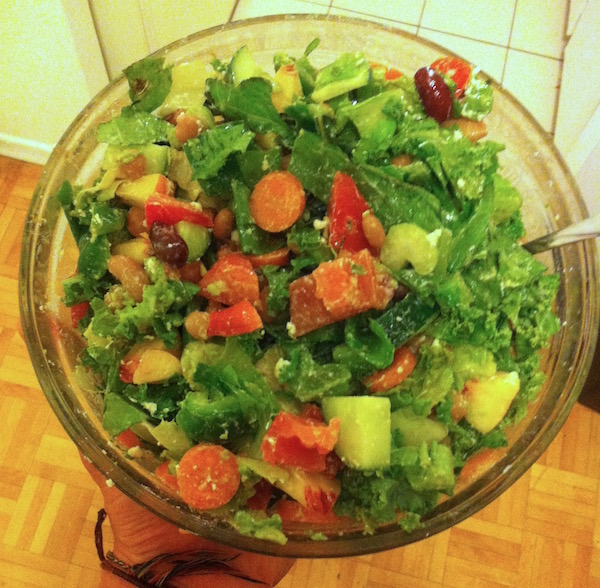
Here’s what I put in salads:
Basic Salad Vegetables
These are the basis of any salad. Basic vegetables include:
– Lettuce (Iceberg, Romaine, Boston)
– Tomatoes
– Cucumber
– Celery
– Carrots
– Bell pepper (Red, yellow, green)
Additional Leafy Greens
I also like to add an extra leafy green vegetable in addition to the lettuce. Lettuce is great but it doesn’t contain much nutrients. Feel free to add a second leafy green like kale, swiss chard, spinach, bok choi or whatever else you can find at the grocery store.
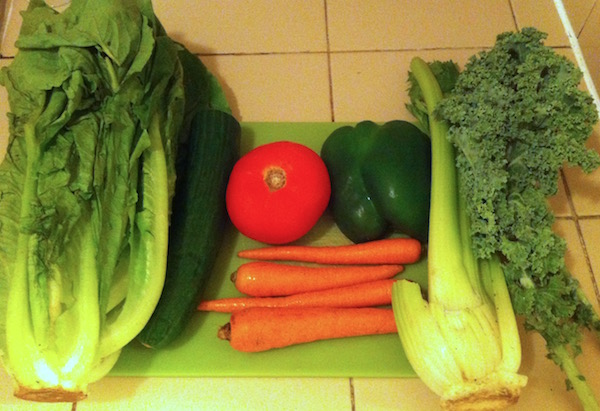
Fruit
Fruit adds a lot to salad flavour-wise. Fruit is also healthy because it contains micronutrients and fibre, and you can easily have one piece of fruit in a big salad and keep it ‘low-carb’.
Apples, pears, nectarines, plums, grapes or berries all work well. Certain dried fruits like dried cranberries are also great.
Healthy Fats
Salad is a perfect opportunity to get in your healthy fats. I like to use avocado, cheese, nuts and olive oil.
Just cut an avocado in half and spoon it into the salad. When you mix all the ingredients around later, everything will get coated in delicious avocado.
Chop cheddar or gouda cheese up into small pieces and add it to the salad. Feta cheese is also good. Old/strong cheese works best because you get more flavour from the small pieces.
Cheese is not technically a ‘healthy’ fat, but it is not unhealthy either. Cheese also adds protein to your salad. Nuts like almonds or walnuts are also a great source of healthy fat that can go in salad.
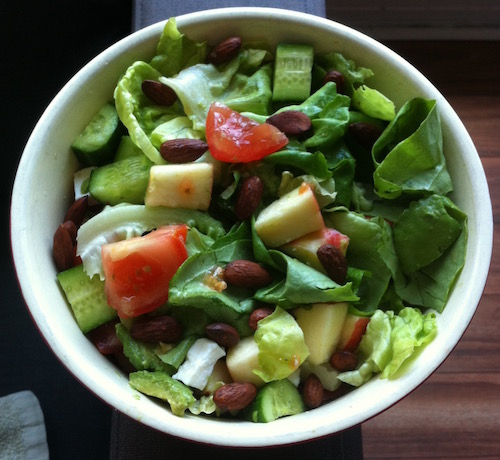
Beans
Beans will add some texture contrast, some protein and a bit more carbs to your salad. I just use regular canned beans/legumes, but bulk ones that you soak would work as well. Chickpeas, red kidney beans and bean salad mixes are all great.
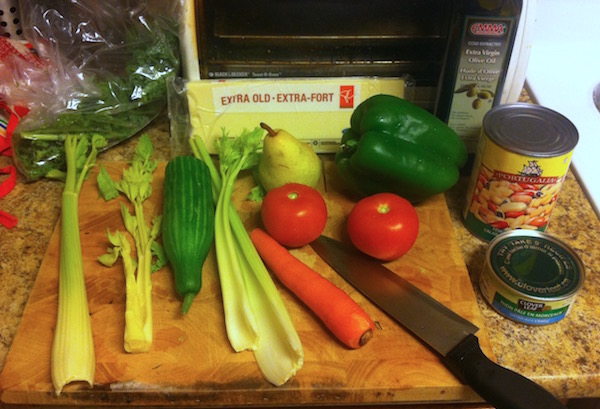
Protein
You may want to add some more protein to your salad, especially if you are looking to gain or maintain muscle mass. The two main sources of protein I use are boiled eggs and canned tuna.
For boiled eggs, just chop them up and add them to the salad. When you mix it around at the end, the yolk of the egg will mix with the avocado and/or olive oil to coat all the ingredients and it tastes pretty good.
Flaked or chunk tuna in water or olive oil is also great. Avoid tuna that is stored in oils other than olive oil.
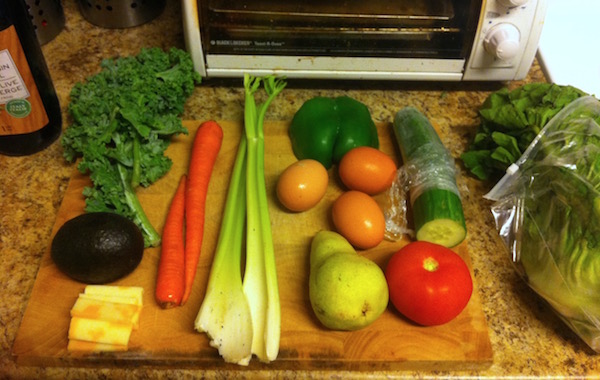
Olive Oil as dressing
The final ingredient to a great salad is olive oil. After you’ve got all the ingredients in the bowl, pour olive oil over the top (I use quite a lot) and then mix it all around.
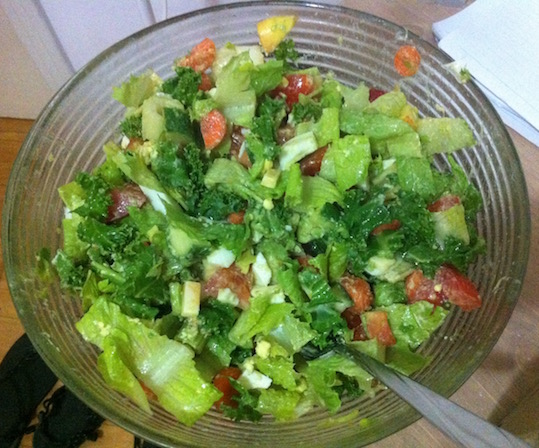
What you end up with is a great meal. I will often break the fast in the afternoon with a huge salad and it’s fantastic.
Take your salad somewhere nice & enjoy
Salads are also very portable – you can put one in a tupperware container and take it to eat somewhere nice outside like the park or beach.
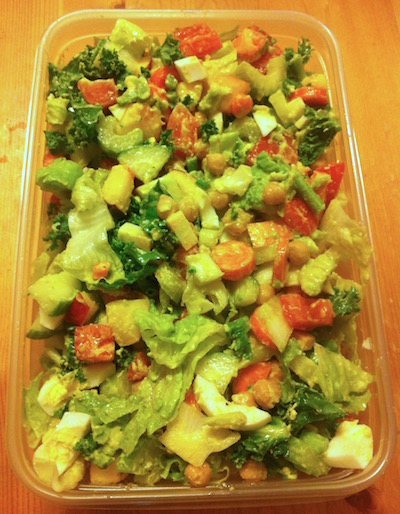
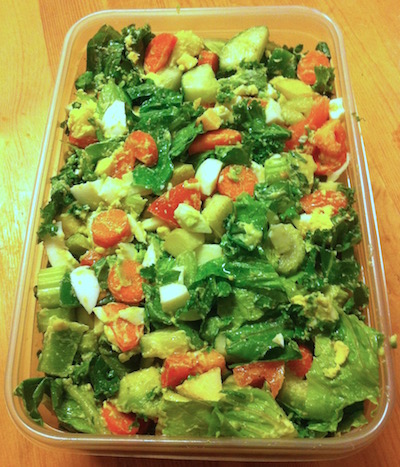
Thanks for reading and enjoy your salad!
Read next: How to “80/20” Your Nutrition with 5 Simple Rules